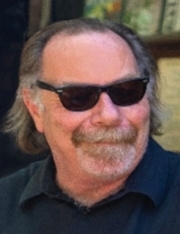
Harmonica phenom/singer Tom Ball and guitar wizard Kenny Sultan have charmed audiences all over the world for decades with their good-time acoustic blues music. Their long-time Sunday residency at Cold Spring Tavern has been hugely popular for nearly forty years, and during that time they have also hit virtually every other Santa Barbara venue, from nearly-forgotten dive bars to the Santa Barbara Bowl.
Tom and Kenny have released eight albums together, and have been featured on multiple radio programs, film scores, TV soundtracks, and commercials. Tom has also played on over 200 albums by other artists including Kenny Loggins and Jeff Bridges, and Kenny was honored by Martin Guitars with the Signature Model 00018KS. They are a true Santa Barbara treasure!
This interview with Tom Ball was for a preview article for noozhawk.com for Tom and Kenny’s 40th Anniversary party at the Lobero Theatre in Santa Barbara on 10/26/19. It was done by phone on 10/10/19. (Skip Saenger photo)
Jeff Moehlis: What brought you to Santa Barbara?
Tom Ball: I was living in Santa Monica at the time. Santa Monica, when I grew up there, was its own little separate beach town. It was very charming and nice. But as the years went by it became more and more sucked up by greater Los Angeles, and it just got to be too crowded. My girlfriend and I, who’s now my wife, got in the car and drove up almost to Washington State, kind of stopping in all the beach communities and figuring out where we wanted to live. We found out that Santa Barbara had a good music scene. They had a Blues Society here, and they had a bunch of clubs to play, and I thought, “Well, this’ll be good.” And Laurie, my girlfriend then, liked it, too, so we moved up here in ’78, and I met Kenny shortly thereafter.
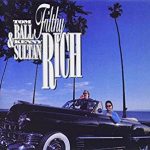
JM: How and when did you meet Kenny?
TB: It was in early ’79. I fell into a band as soon as got here called Blues Company. It was an electric blues band, and we were working, but it was a little too close to rock ‘n’ roll for me. I wanted to play acoustic blues, and I looked in the News and Review and I saw Kenny’s name, and it said that he played acoustic guitar, blues and ragtime. So I thought, “This is somebody I should check out.” He was playing at this club on State Street called Deja Vu, and I wanted to see him but I couldn’t because my band was working at the Bluebird. So I asked Laurie if she would check this guy out. She went there with a clipboard and took notes, and came back and said, “He plays Blind Blake and Gary Davis, and he’s a great fingerpicker, and he has a great sense of humor, and he drinks Heineken.” So I thought, “That’s somebody I should meet.”
About a week later, the Blues Society was putting on a show – Big Mama Thornton was playing at Baudelaire’s – and Laurie says to me, “Oh, that’s that Kenny guy over there,” so I went over and introduced myself. A couple of days later we got together at his house and did some picking, and it sounded pretty good. He mentioned that he was going to go on a KCSB radio show to promote some lessons that he was doing at the university, and he asked me if I wanted to accompany him on the radio. So I said, “Sure”, and we went and played a couple of songs on the radio. And the phone rings, and it’s the Sojourner Cafe, and they said, “Do you guys want to play here on Friday night? We’ll give you fifteen bucks and a pizza.” So we held out for free beer, and they said, “OK”. So we went down there and played, and it went well, and then we started playing there once a week. But after a while it wasn’t really a great fit, because it was a health food restaurant, you know [laughs]? So we didn’t play there for very long, but we moved over to the Bluebird and started playing there once a week, and then one thing led to another, and pretty soon we were playing five nights a week. It just sort of took off from there.
JM: Do you have any idea how many gigs you and Kenny have done together over the years?
TB: About 5000.
JM: And how many of those were at Cold Spring Tavern?
TB: [laughs] Quite a lot. We’ve held down the Sunday slot there for almost 40 years. But we travel, so they give us an option to cancel out as long as we give them a few weeks notice. So we’re there every Sunday whenever we’re in town, and have been for almost 40 years.
JM: What is the strangest place where you and Kenny have performed?
TB: Well, we played in the rec room of an insane asylum in the Netherlands once. That was pretty interesting. That was the only room in the insane asylum where the patients were completely unmonitored, and could do anything they wanted. It was pretty outrageous.
The funny thing was that was the day after we played a massive festival in Denmark – a hundred thousand people. Dylan was there, Paul Simon, Metallica, all these people. We felt like superstars, and then the next day we’re in the rec room of a crazy house. It just goes to show the ups and downs of the music world.
JM: Was it a successful gig in the insane asylum?
TB: This one guy kept trying to sit on my lap and yell the only words that he knew in English, which was “El Monte, El Monte!” He just kept saying that at me. And then there was a washer and dryer in the room, and there was a lot of people crowded around the dryer watching the clothes go around in circles. That was pretty interesting [laughs]. But you do what you’ve got to do, right?
JM: Never turn down a gig.
TB: That’s right.
JM: What do you think is the secret to the longevity of Tom and Kenny? It’s pretty rare for people to be playing together that long, and seemingly still liking each other.
TB: We’re good friends, so that helps. And we both have the same kinds of interests when we’re on the road – that helps. And because we’re only a duo, we both have veto power over the material. You’re never outnumbered. If you’re in a five-piece band and you hate a song but the other four guys like it, you’re stuck doing it, because you’re outvoted. But when you’re in a duo, you can’t outvote anyone, so we just don’t do anything unless we both like it. So it actually makes things pretty easy.
JM: Thinking way back, before Tom and Kenny, what drew you to the harmonica?
TB: Well, I played guitar first. I learned guitar when I was about ten, and right about then the big folk boom happened in the States, in the early ’60’s. There were all these guys who played guitar and sang, and they had harmonicas with a rack, you know, Bob Dylan and Donovan and Eric Andersen and Hamilton Camp. So I went out and bought a harmonica and made a rack out of a coat hanger, and tried to do that. I was skateboarding around with my harmonica rack on, playing harmonica. You know, I really didn’t know how to play it. I was just kind of breathing through it like those guys do.
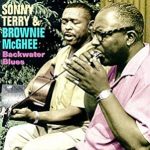
But then one day I was listening to the radio, and I heard Sonny Terry. His playing was just phenomenal, and I thought, “Wow, this instrument is capable of so much more than what I’m doing.” So I started studying Sonny Terry, and learning from Little Walter, and learning from records by Sonny Boy Williamson. In those days there was no instructional material, so you just basically had to teach yourself. And it took a while, but I got into it. In high school I was in a band that was working all the clubs on the Sunset Strip. What I determined early on was everybody played guitar. I could play guitar, and I could play it pretty good, but there were a lot of better players, and there was a lot of competition, but nobody was playing harmonica, so I figured that was going to be an easier route to getting into a band. So I just pursued that, and one thing led to another.
JM: Any memories from those days on the Sunset Strip that you’re willing to share? I’m sure there was a lot of interesting music and people back then.
TB: Yeah, there was a lot going on. I think the most fun gig we did was the very first Love In ever. It was in Elysian Park on Easter Sunday in 1967, and there was about 10,000 people there. That’s pretty scary for a 16 year old. There were a lot of people dancing around with flowers, and a lot of patchouli and weed in the air [laughs]. It was pretty fun. I enjoyed that a lot.
JM: What’s the most exotic harmonica that you own?
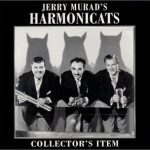
TB: I have a great big bass harmonica. It’s about the size of a loaf of bread. I bought if off a guy named Dick Gardner, who was the bass harmonica player in The Harmonicats, which was a real famous harmonica group back in the ’40’s and ’50’s. It’s very low. In fact, it’ll hit all the low notes that a stand-up bass can hit. But it’s not easy to play. You really have to have a lot of wind. It’s not something that I’ve used in performance, but I’ve used it quite often in recordings.
JM: You mentioned that you started off playing guitar, and you’re actually quite a good guitar player, and you’re a great singer. Is there anything you can’t do?
TB: Everything else [both laugh]. Those are the only instruments I ever learned. I kind of flirted with banjo and mandolin, but I never got very good at it. So, yeah, that’s it. Just guitar, harp, and singin’.
JM: In addition to playing with Kenny, you’ve done a lot of studio work, and have played on hundreds of albums. Are there any of those that really stand out to you?
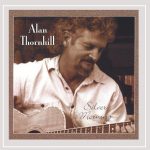
TB: Oh… The thing about recording, it takes me out of my comfort zone a lot of the time, and that’s good – it makes you a better musician. So if it’s a blues record I can do it in my sleep, but if it’s a real melodic pop record, or a rock record, or a jazz record, I really have to sit down and work at the stuff. And that’s good for you. That’s what helps people become better musicians.
There’s been quite a few that I really like. One that I really liked a lot was Alan Thornhill, who’s a musician from Ojai – a great songwriter, a great singer, a great guitarist – and I had a chance to play on his record. He’s not a superstar, but he should be. He’s a wonderful musician, and I liked what I played on that record. That one comes to mind.
JM: One of my favorites of the songs that you and Kenny do is “Chicken a la Blues”. What’s the story behind that song?
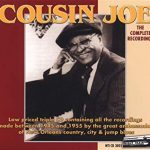
TB: We didn’t write that song. There’s a piano player who was pretty popular in the ’40’s, who went by the name of Cousin Joe. His really name was Pleasant Joseph, which you would think is unique enough that he wouldn’t need a pseudonym on top of that, but he called himself Cousin Joe. He was from New Orleans, and I had a chance to meet him down in New Orleans – a very nice fellow. He wrote that song way back in the ’40’s, so we got it off him.
JM: Another song I want to ask about is “All Talk and No Action”.
TB: Yeah, I wrote the words to that, and Kenny did most of the music. We kind of made that up when we were working at The Grill in Montecito back in the ’80’s. It was always really noisy, and people were talking a lot, nobody was listening, so we made that up as kind of a revenge against the crowd there. But it backfired on us because people were so busy talking, they didn’t even know we were singing about them [both laugh].
JM: When you play at Cold Spring Tavern, some people are listening, but people are always talking. How do you deal with that sort of dynamic?
TB: We’re pretty used to that. The challenge at Cold Spring is when you have forty Harleys going by right in front of you, all in a row. It just totally drowns you out, and all you can do is just laugh. I mean, we love Cold Spring – it’s our favorite gig – but it’s not exactly a concert setting, so you have to treat it more like a party. And that’s fine, because it gives us an opportunity to keep in practice and keep our chops together. It refines you, and we’ve been there so long that it’s just home.
JM: You’ve been part of the Santa Barbara music scene for a long time now. Any highlights from that scene that stand out to you, not necessarily involving you and Kenny?
TB: Well, there’s a whole lot of great musicians who live in this town. I’ve had the pleasure and luck to play with almost all of them at one point or another. You know, it’s a good scene here. There’s not as much live music now as there used to be, that’s for sure. There was a time when we could work five nights a week at various clubs that had music, but a lot of those clubs have gone to either DJs or karaoke, or they’re not interested in music. So we hardly play downtown anymore. We really don’t play downtown anymore. Every now and then at SOhO or somewhere, but nothing regular downtown. We hold down the fort on Sundays at the Tavern, and then we travel.
JM: What advice would you give to someone who is just starting out with the harmonica? What advice to help them find their way?
TB: Two things. Number one is that when you play the style of harmonica that I play, at least, you should remember that you’re inhaling a lot more often then you’re exhaling. A lot of people think of harmonica like a horn, where you’re making music by blowing out, but with a harmonica you can make tones by blowing out or sucking in. And when you play blues, you want to be inhaling way more often than exhaling, because that way you can bend notes. The way a harmonica is built, you can only bend the inhaled notes, so you want to make sure you’re inhaling.
And second, I would say to people for every hour you spend playing, spend two hours listening. Because the more you surround yourself with harmonica music, it becomes stuck in your brain. If you listen to, say, Sonny Terry for two hours, those phrases that he plays – he repeats them a lot – they more you listen to them, the more you memorize them, and then when you accidentally find that phrase on the harmonica this big lightbulb goes off, and it’s like, “Ah, that’s how he did it.” Yeah, I recommend two hours of listening for every hour of playing.
JM: What’s in the works for Tom and Kenny? Are you thinking of recording another album?
TB: We’re always thinking about it, but the unfortunate truth is that these days it’s pretty tough to sell CDs. It’s all about streaming and downloading, and Spotify pays one billionth of a penny, you know, for every time [laughs]. So it becomes difficult financially. And the small independent record labels that used to be around, that used to finance these things for us – Flying Fish, Rounder, Kicking Mule – they’re no longer in business. So the only way you can get a record out these days, unless you’re a superstar, is to independently record and press it yourself. And there’s nothing wrong with that, but it’s very difficult to get your money back. Nobody buys CDs anymore. I can’t remember the last time we sold a CD to somebody under 50. So it’s kind of a dying proposition.
But at the same time, what’s happened is that back when I was a kid there were seven TV channels, and now there’s like 600, and all those TV channels have programming, and all that programming needs music. So Kenny and I and Brian Mann put together a music library service where we recorded tons and tons of instrumental music of all different types, and then we signed a deal with a publishing company, and now that stuff is accessible, and we’re finding these little snippets of our music in the background to all these unlikely cable TV and reality show, and stuff like that. And all of that earns a royalty. So for every door that closes, another one opens. It’s just the nature of the music business is always changing, and you have to keep up with the times. In our case, the music library thing has really done well for us.
JM: I’m glad that’s working out. It’s cool that, as you say, you have to keep up with the times, but then you can still play songs from the 1940’s.
TB: [laughs] Yeah, a lot of our music goes back even to 1903. And that’s fun for us. Right now, I think probably half of our material is original, and half is old stuff. But we don’t do the standard old stuff. We try to find real obscure old stuff, so that nobody’s ever heard the original, and they can’t compare us with the original [laughs].
JM: One last question, but you may not want to answer it. Any surprises in store for the Lobero show? Or maybe that spoils the surprise.
TB: Well, yeah, see if we told you, then we’d have to kill you [both laugh].

Discussion
No comments for “Interview: Tom Ball”